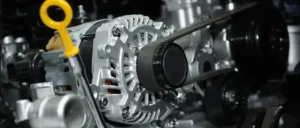Your car’s electrical system is its lifeline, powering everything from the ignition to the headlights, radio, and climate control. When something goes awry—be it a dead battery, flickering lights, or a silent stereo—it can leave you stranded or frustrated. While electrical issues can feel intimidating, many are solvable with a methodical approach, basic tools, and a bit of know-how. This comprehensive guide walks you through troubleshooting your car’s electrical system step-by-step, helping you diagnose and fix common problems without rushing to a mechanic. From checking the battery to scanning error codes, you’ll gain the confidence to tackle electrical gremlins and keep your ride humming.
Understanding Your Car’s Electrical System
Before diving in, a quick primer on the key players in your car’s electrical setup sets the stage for effective troubleshooting.
Key Components
-
- Battery: The power hub—stores energy to crank the engine and run accessories when the engine’s off.
-
- Alternator: The charger—generates electricity while the engine runs, keeping the battery topped up and systems alive.
-
- Starter Motor: The initiator—spins the engine to life when you turn the key.
-
- Fuses and Relays: The guardians—fuses blow to protect circuits; relays switch high-power components on and off.
-
- Wiring and Connectors: The pathways—carry current to every corner of the car.
-
- Switches and Sensors: The controllers—manage functions (e.g., light switches) and monitor conditions (e.g., oxygen sensors).
How It Works
The battery kicks things off, the starter engages the engine, and the alternator takes over once running—wiring ties it all together. A fault in any part can ripple through, dimming lights or stalling startups. Knowing this flow helps you pinpoint where trouble starts.
Step-by-Step Troubleshooting Guide
Here’s how to systematically diagnose electrical issues—start simple and escalate as needed.
Step 1: Check the Battery
A weak or dead battery is the prime suspect in most electrical woes—start here.
1.1 Inspect Battery Terminals
-
- Look: Check for white, green, or bluish corrosion on terminals—acid buildup blocks current.
-
- Clean: Mix a tablespoon of baking soda with a cup of water, scrub with a wire brush, rinse with clean water, and dry. Tighten loose clamps with a wrench—snug, not cranked.
-
- Why: Corrosion or loose connections starve the system of power.
1.2 Check Battery Voltage
-
- Tool: Use a multimeter (set to DC volts, 20V range)—$15 at any hardware store.
-
- Test: Touch the red probe to the positive (+) terminal, black to negative (-). Engine off: 12.6V+ is healthy; 12.4V or less needs charging. Engine running: 13.7–14.7V shows alternator charging.
-
- Why: Voltage reveals charge health—low readings signal trouble.
1.3 Perform a Load Test
-
- Jump: If voltage is low, jump-start the car—cables on, wait 2 minutes, crank.
-
- Check: Drive 20 minutes or charge with a trickle charger. Retest voltage—if it drops below 12.4V again, replace the battery (3–5 years is typical life).
-
- Why: Tests holding capacity—old batteries fail under load.
Step 2: Test the Alternator
If the battery’s good but drains fast, the alternator might not be pulling its weight.
2.1 Check for Warning Lights
-
- Look: A lit battery icon or “ALT” on the dash hints at charging issues—don’t ignore it.
-
- Why: The car’s computer flags alternator underperformance.
2.2 Measure Alternator Output
-
- Test: Engine running, multimeter on battery terminals—13.7–14.7V is ideal. Below 13V? Undercharging. Above 15V? Overcharging (rare, but fries electronics).
-
- Why: Confirms the alternator’s generating power.
2.3 Inspect the Alternator Belt
-
- Check: Look under the hood—belt loose (more than ½-inch play), cracked, or glazed? Tighten or replace (serpentine belts cost $20–$50).
-
- Why: A slipping belt starves the alternator, mimicking failure.
2.4 Listen for Unusual Noises
-
- Hear: Whining or grinding from the alternator (front of engine) signals bad bearings or worn parts—replace if confirmed.
-
- Why: Mechanical failure cuts charging efficiency.
Step 3: Test the Starter Motor
No crank? The starter could be the culprit—here’s how to check.
3.1 Listen for Clicking Sounds
-
- Turn Key: Rapid clicks mean low power (battery or solenoid issue); one loud click suggests a seized starter.
-
- Why: Sound pinpoints where power stops.
3.2 Check Voltage at the Starter
-
- Locate: Starter’s under the engine—follow thick positive cable from battery.
-
- Test: Multimeter on starter terminals while a helper cranks—12V+ should show. No crank but voltage? Starter’s dead—replace ($100–$300).
-
- Why: Rules out wiring vs. starter failure.
3.3 Try Tapping the Starter
-
- Tap: Lightly hit the starter with a wrench or hammer while cranking—frees stuck brushes temporarily.
-
- Why: Gets you home, but replace it soon—stopgap only.
Step 4: Inspect the Fuses and Relays
A blown fuse or bad relay can kill specific systems—lights, wipers, etc.
4.1 Locate the Fuse Box
-
- Find: Check your manual—usually under the hood or dash (sometimes both).
-
- Why: Houses all circuit protectors—your map to power flow.
4.2 Identify the Problematic Fuse
-
- Look: Pull fuses with a fuse puller or fingers—burned metal strip or melted plastic means it’s blown. Match amperage (e.g., 10A, 20A) for replacements.
-
- Why: A $1 fix—carry spares (kit’s $5).
4.3 Test Relays
-
- Swap: Relays click when powered—swap a suspect one (e.g., headlight relay) with a known good one of the same type. Problem shifts? Bad relay—$10 fix.
-
- Why: Relays fail silently—testing isolates them.
Step 5: Check for Wiring Issues
Wiring faults—breaks, shorts, or corrosion—cause sneaky, intermittent issues.
5.1 Inspect Visible Wires
-
- Look: Under hood, dash, near battery—check for frayed insulation, melted spots, or green corrosion.
-
- Why: Exposed wires short; corrosion blocks flow.
5.2 Use a Multimeter for Continuity Tests
-
- Test: Set multimeter to continuity (beep mode), touch probes to wire ends—beep means intact, silence means broken. Test suspect runs (e.g., headlight wire).
-
- Why: Finds hidden breaks without tearing apart panels.
5.3 Look for Rodent Damage
-
- Check: Gnawed wires or nesting under hood—mice love soy-based insulation in newer cars.
-
- Fix: Tape small chew spots; replace big damage—use rodent repellent (peppermint oil works).
-
- Why: Critters cost billions in repairs yearly—don’t skip this.
Step 6: Test Individual Electrical Components
When one thing fails (e.g., radio, windows), isolate it.
6.1 Check the Switches
-
- Test: Toggle suspect switch—listen for clicks or test with multimeter for power output. No response? Swap or replace ($10–$50).
-
- Why: Switches wear out—common culprit.
6.2 Test the Ground Connection
-
- Check: Multimeter in continuity mode—probe component ground to chassis. No beep? Clean or redo the ground (sand rust, tighten bolts).
-
- Why: Bad grounds mimic dead components—flickering’s a clue.
6.3 Inspect for Shorts
-
- Look: Fuse blows repeatedly? Trace wiring for bare spots touching metal—tape or reroute.
-
- Why: Shorts drain power and fry fuses—fix the source.
Step 7: Scan for Error Codes
Modern cars log issues via the OBD-II system—tap into it.
7.1 Use an OBD-II Scanner
-
- Plug: Find the port (under dash, near steering wheel), connect a scanner ($20–$50 online).
-
- Read: Turn key to “on” (not running), scan—codes like “P0301” pop up.
-
- Why: Pinpoints faults fast—saves guesswork.
7.2 Interpret the Codes
-
- Research: Google codes (e.g., “P0301 = cylinder 1 misfire”) or use a repair manual—cross-check symptoms.
-
- Why: Codes guide you—misfire might tie to wiring, not just plugs.
Preventative Maintenance Tips
Stop issues before they start with these habits.
Tips to Keep It Running
-
- Clean Terminals: Scrub battery posts quarterly—corrosion creeps in.
-
- Drive Regularly: 20–30-minute drives weekly recharge the battery—short hops drain it.
-
- Limit Accessories: Aftermarket lights or stereos tax the alternator—check capacity (amps) first.
-
- Check Grounds: Tighten ground bolts yearly—loose ones spark chaos.
-
- Watch Signs: Dim lights, slow windows, or weak cranks? Act early—don’t wait for failure.
Why Prevent?
A $5 fix today beats a $500 tow tomorrow—maintenance is cheap insurance.
When to Seek Professional Help
DIY hits limits—know when to call it.
Signs to Stop
-
- Intermittent Faults: Random glitches (e.g., lights flicker then work) need advanced diagnostics—pros have oscilloscopes.
-
- Complex Fixes: Alternator rebuilds or ECU issues require shop tools and skills.
-
- Safety Risks: Airbag or ABS faults? Don’t touch—certified techs handle it.
Why Pros?
They catch what you miss—save time and avoid frying costly parts.
Additional Insights
Why Learn This?
DIY saves $50–$200 per fix—plus, you’re not helpless roadside. Knowledge beats panic.
Tools Cost
Multimeter ($15), OBD-II scanner ($25), wire brush ($5)—under $50 total, reusable forever.
Common Culprits
-
- Dead battery: 50% of issues.
-
- Alternator: 20%.
-
- Wiring: Sneaky 15%.
Conclusion
Troubleshooting your car’s electrical system doesn’t have to be a mystery. Start with the battery, test the alternator and starter, check fuses and wiring, isolate components, and scan codes—a logical path reveals most faults. With a multimeter, some patience, and this guide, you’ll fix flickering lights, dead radios, or no-starts like a pro. Regular care—clean terminals, steady drives—keeps the system humming, cutting repair bills and downtime. If it gets hairy, pros are there—but you’ll handle plenty solo. Dive in—your car’s spark is in your hands!




